Exhibition Details
Time: February 10, 2023 – June 4, 2023
Location: Rijksmuseum, Amsterdam, the Netherlands
Exhibits: 28 of the 37 (including controversial) Vermeer works, with "Girl with a Pearl Earring" being withdrawn on March 30th and returned to The Hague
Tickets:
The Exhibition Tickets (includes entry to permanent collection): 30 euros per person, with specific time slot reservations required. Tickets have sold out.
‘Friend’, The Museum Annual Pass: 50 euros for one person, 75 euros for one person with a guest. No reservations required, but has also sold out due to high demand.
However, more tickets will be available on March 6th, according to the museum officials.
What are the featured works in the exhibition?
The following works are presented in chronological order of creation. As the specific creation dates of most works are disputed in academic circles, only rough time periods are provided. The titles of the works have been selected based on those used by the official exhibition website. The pictures used in this translation are the main images found on the Wikipedia page. As Vermeer’s research has been very active in recent years, with new viewpoints emerging or being overturned, this exhibition is a culmination of those efforts.
Diana and her Nymphs, 1655–56, Mauritshuis, The Hague

Christ in the House of Mary and Martha, 1654–55, National Galleries of Scotland, Edinburgh
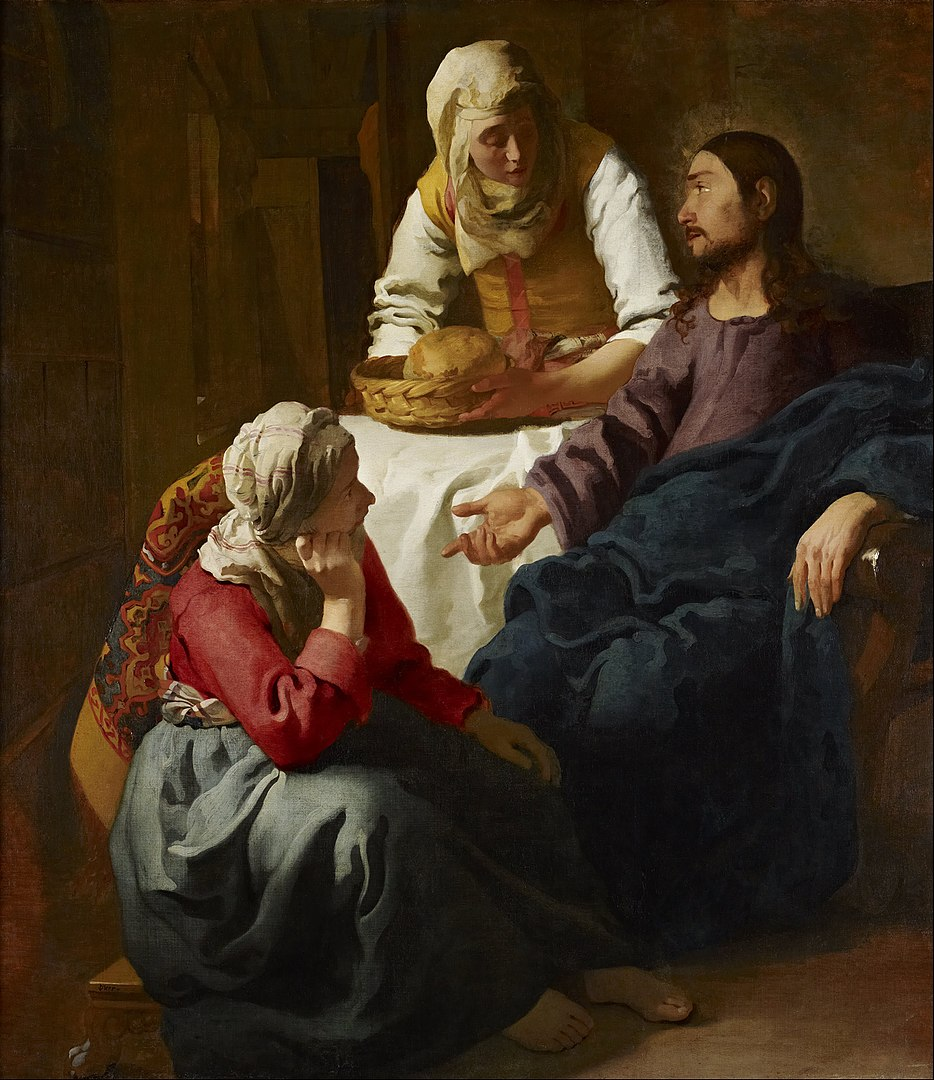
Saint Praxedis, 1655, Kufu Company Inc., The National Museum of Western Art, Tokyo

The Procuress, 1656, Gemäldegalerie Alte Meister, Dresden
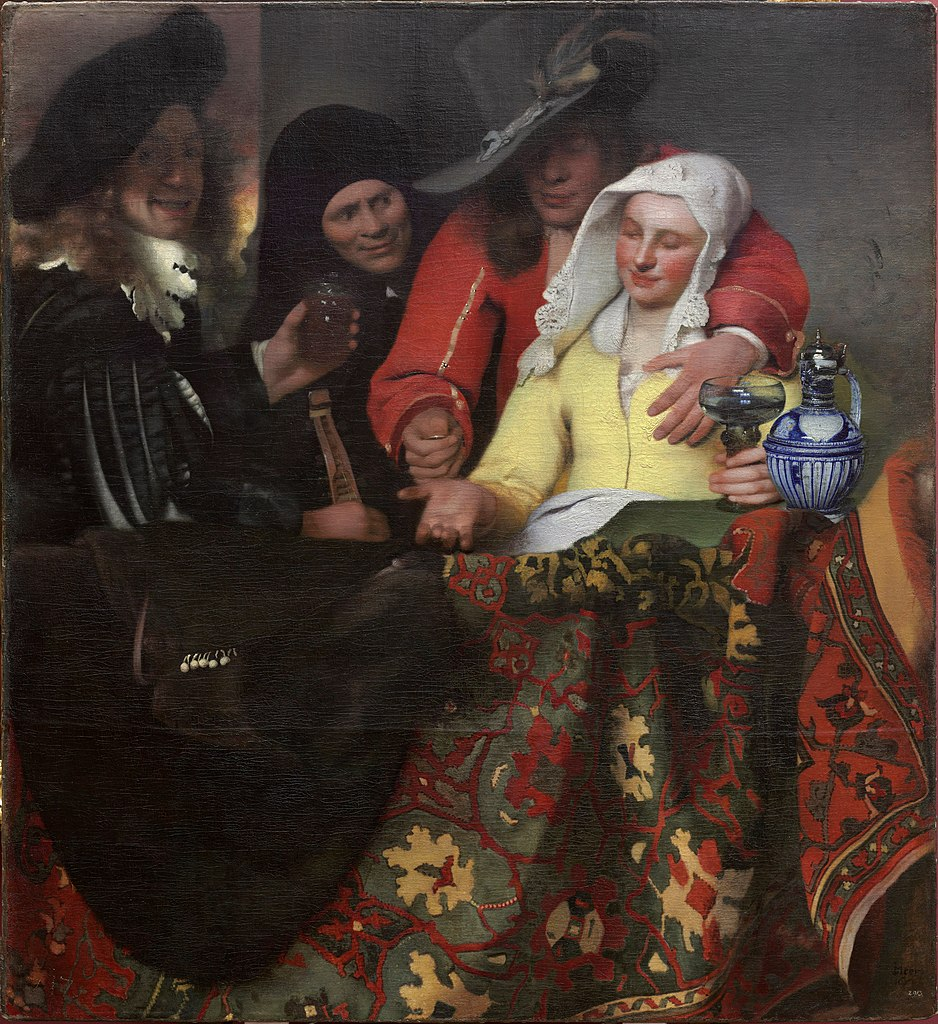
Girl Reading a Letter at an Open Window, 1657-58, Gemäldegalerie Alte Meister, Dresden
This work, restored in 2021 and previously the centerpiece of the last Vermeer exhibition in Dresden, is one of the highlights of the current exhibition.
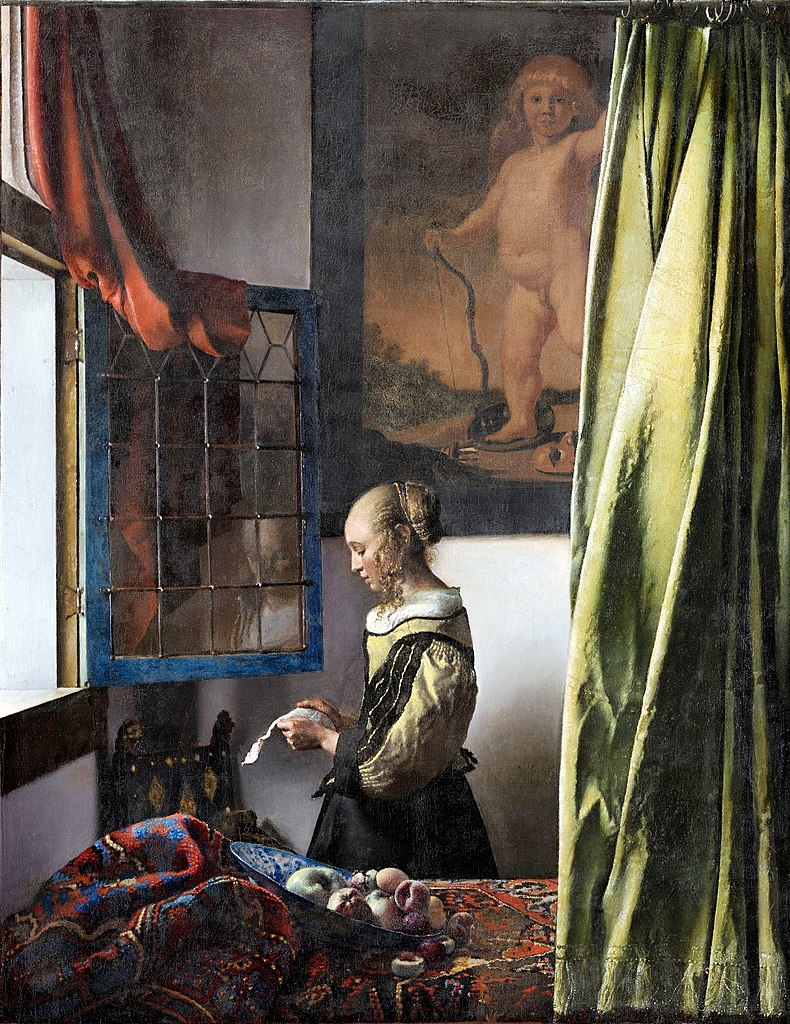
Officer and Laughing Girl, 1657-58, The Frick Collection, New York

The Milkmaid, 1658-59, Rijksmuseum, Amsterdam

Girl Interrupted at Her Music, c. 1659–61, The Frick Collection, New York
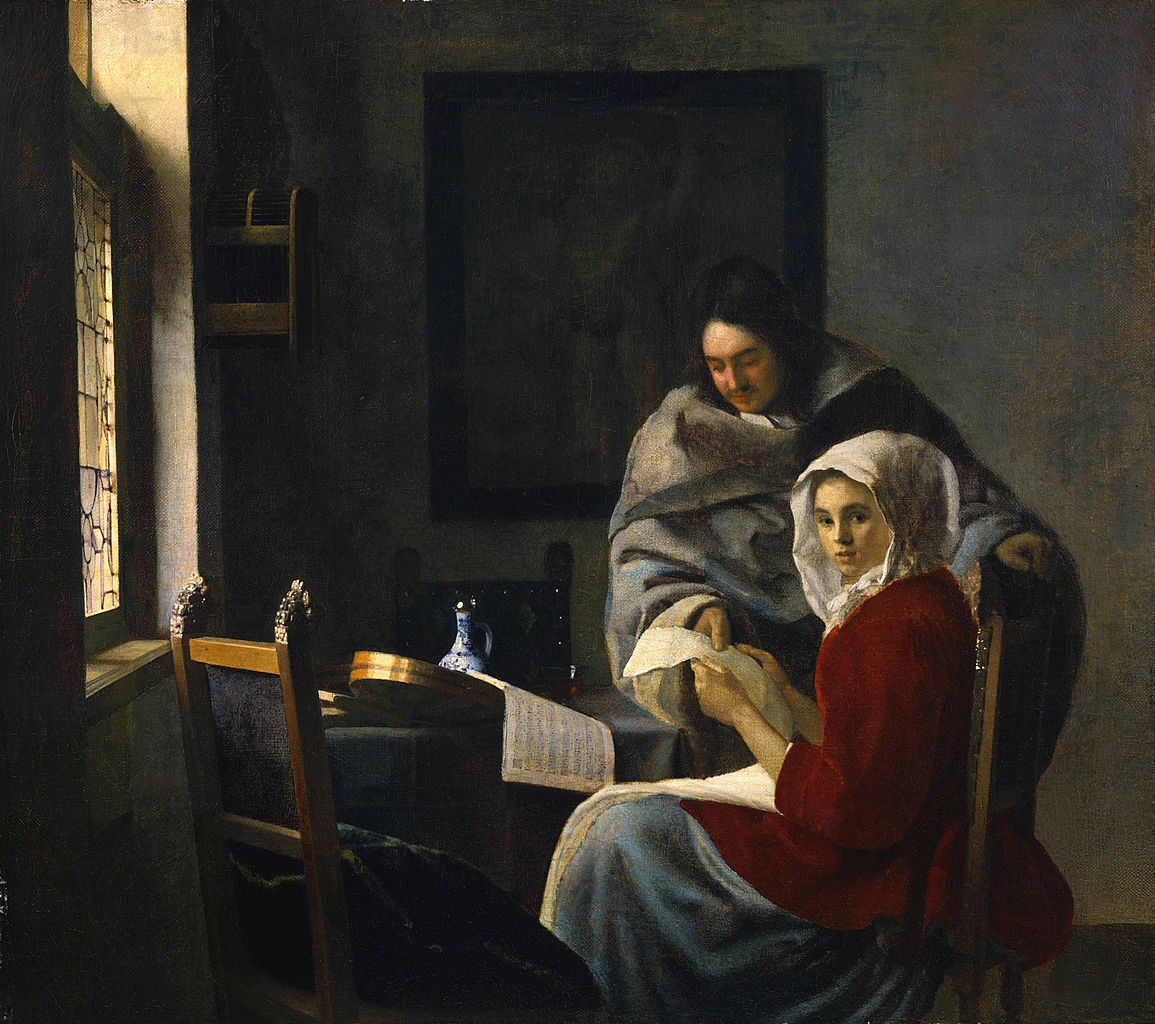
The Glass of Wine, c. 1659-61, Staatliche Museen zu Berlin, Gemäldegalerie
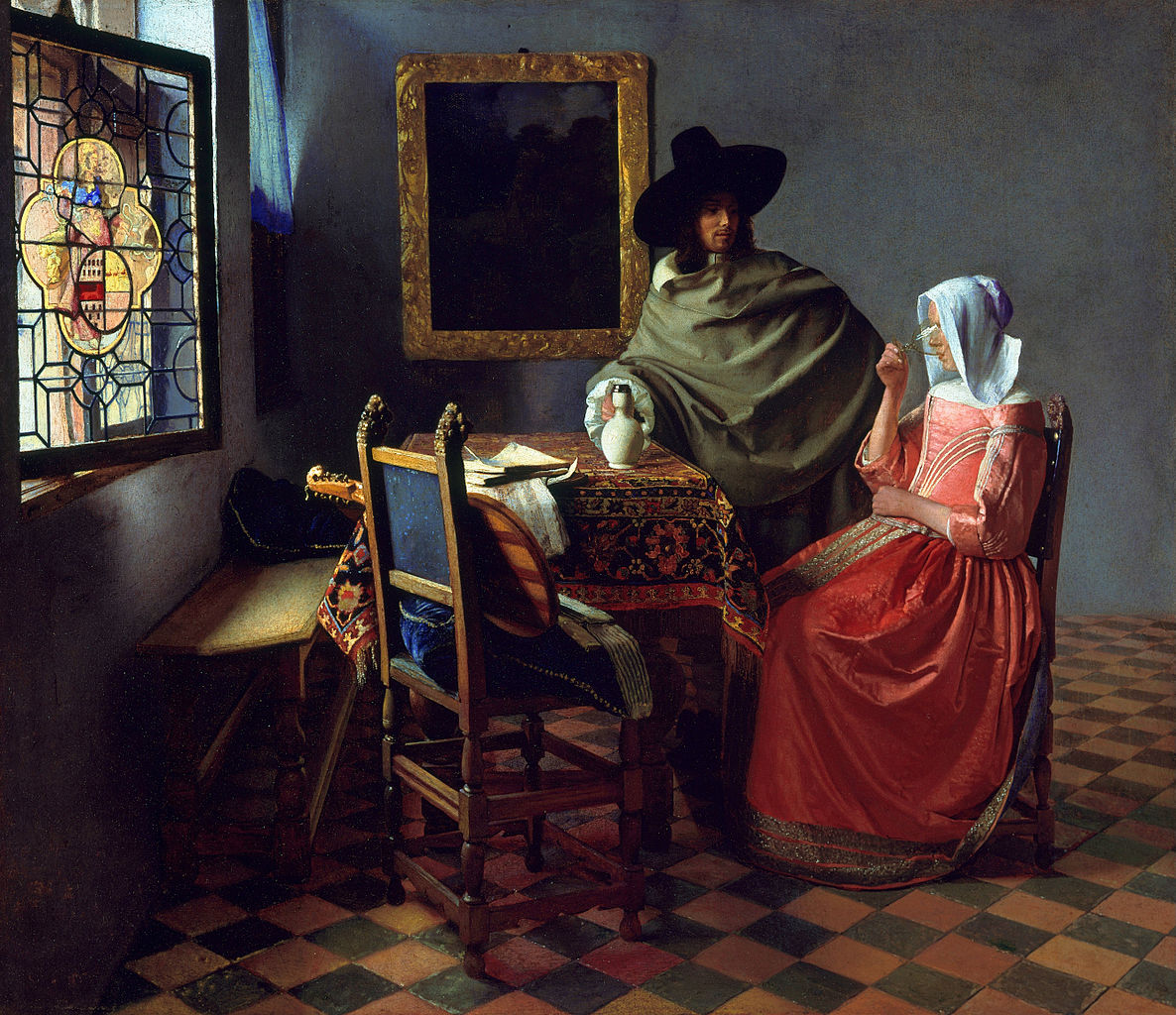
View of Houses in Delft, known as ‘The Little Street’, 1658-59, Rijksmuseum, Amsterdam

View of Delft, 1660-61, Mauritshuis, The Hague
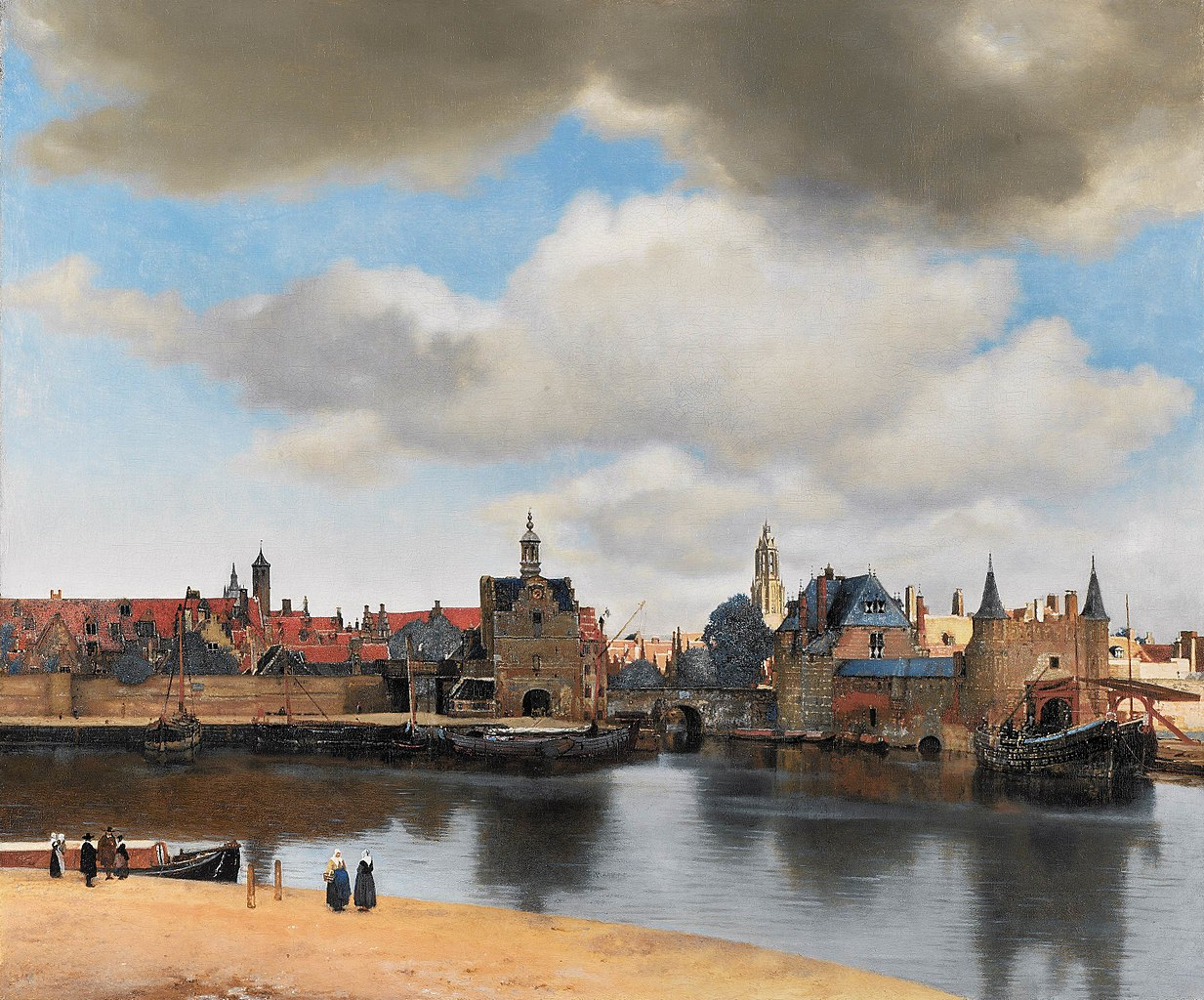
Young Woman with a Lute, 1662–64, The Metropolitan Museum of Art, New York

Woman in blue Reading a Letter, 1662-64, Rijksmuseum, Amsterdam

Woman with a Pearl Necklace, c. 1662-64, Staatliche Museen zu Berlin, Gemäldegalerie
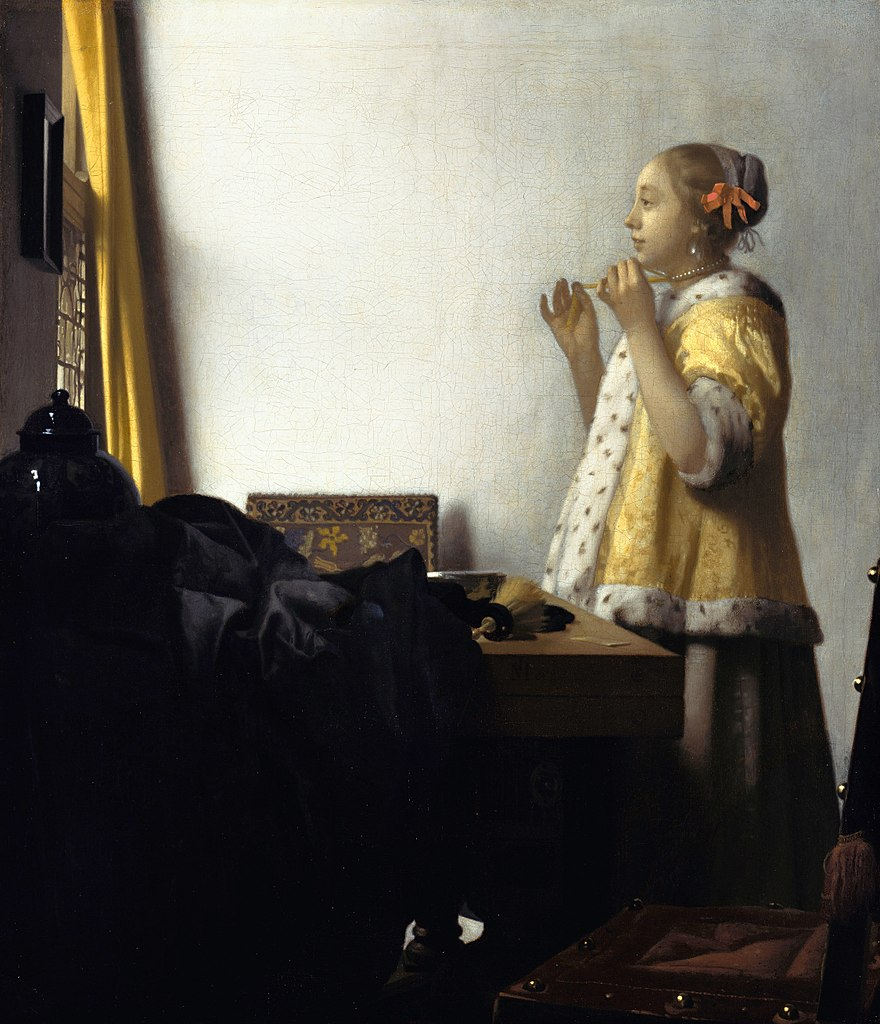
Woman Holding a Balance, ca. 1662–64, National Gallery of Art, Washington
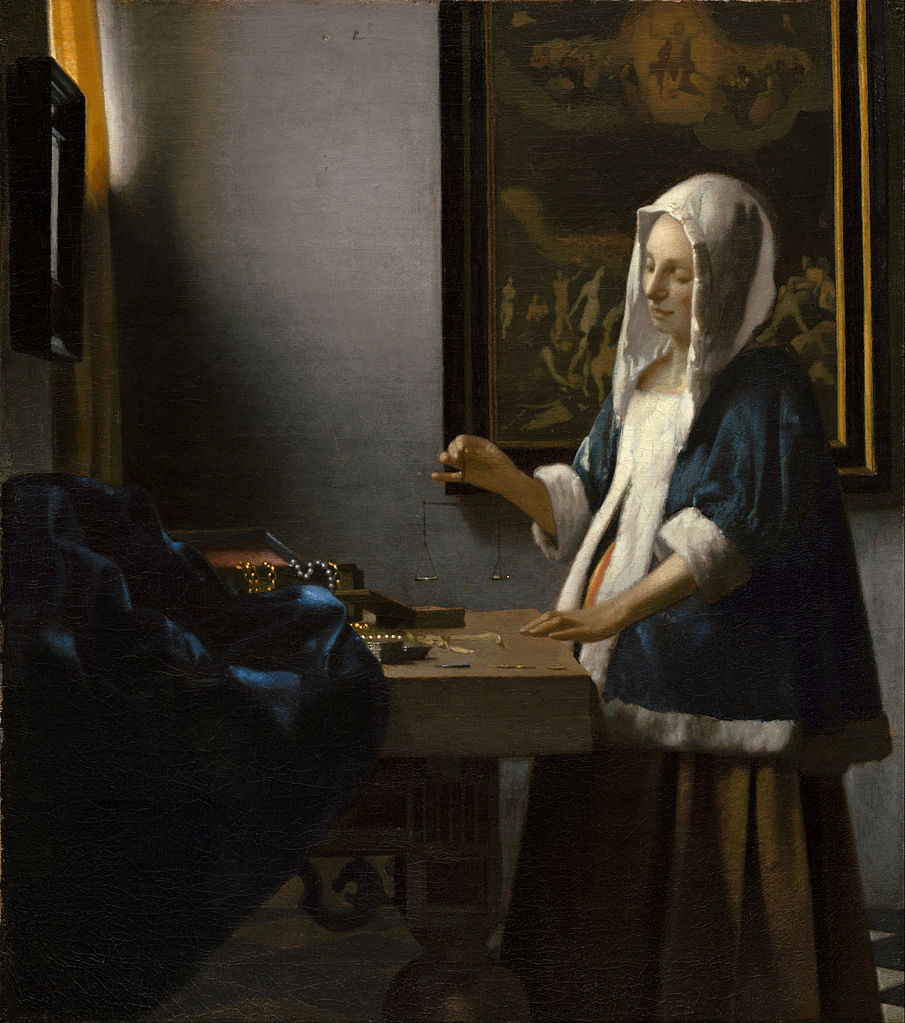
A Lady Writing, 1664–67, National Gallery of Art, Washington
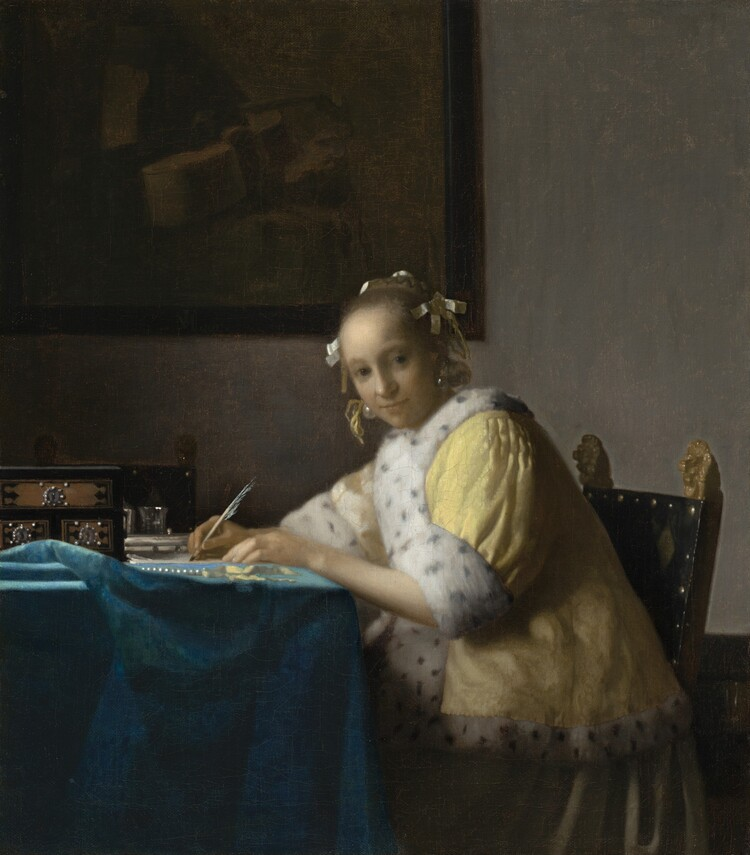
Mistress and Maid, c. 1665–67, The Frick Collection, New York

Girl with a Pearl Earring, 1664–67, Mauritshuis, The Hague
This painting has been withdrawn from the exhibition since March 30th, but as Amsterdam is less than an hour away from The Hague, it is still accessible for those who wish to see it.
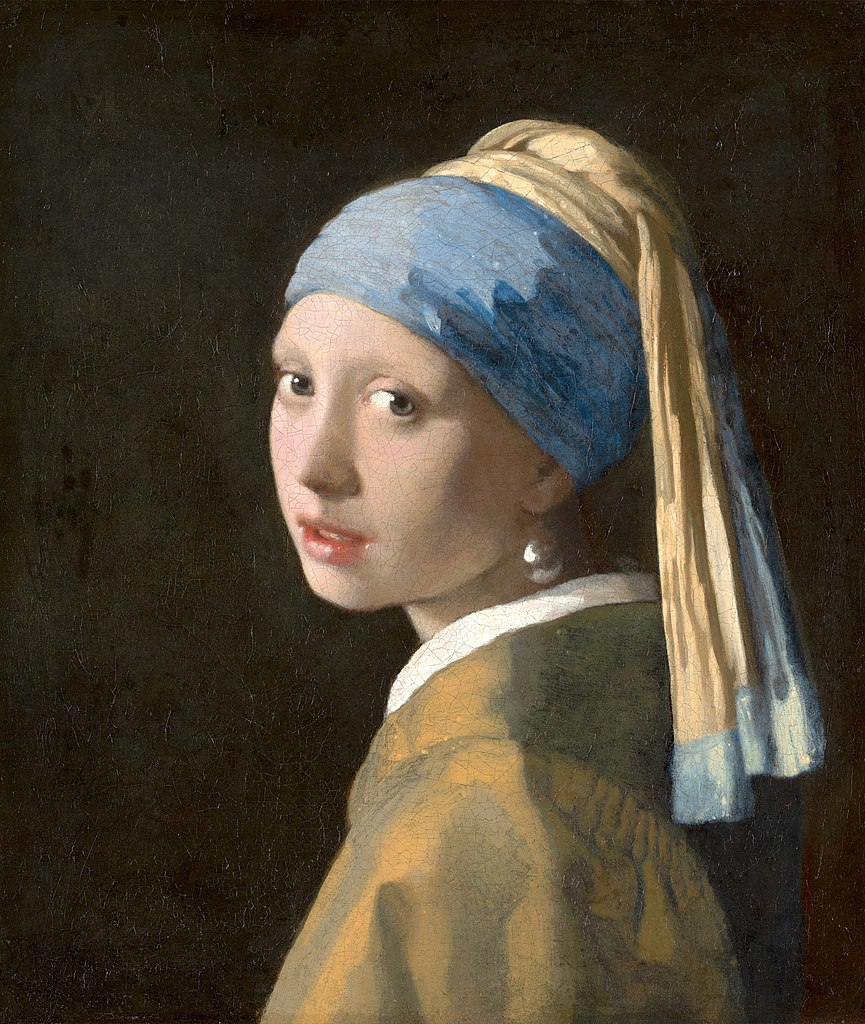
Girl with the Red Hat, 1664–67, National Gallery of Art, Washington

Girl with a Flute, 1664–67, National Gallery of Art, Washington
This painting, which is the same size as the previous one, had been the subject of long-standing controversy. In late 2022, the research team at the National Gallery of Art in Washington released their findings, indicating that this work was drafted by Vermeer himself and completed by others. This work is now the only one marked as "Vermeer studio" in existence.
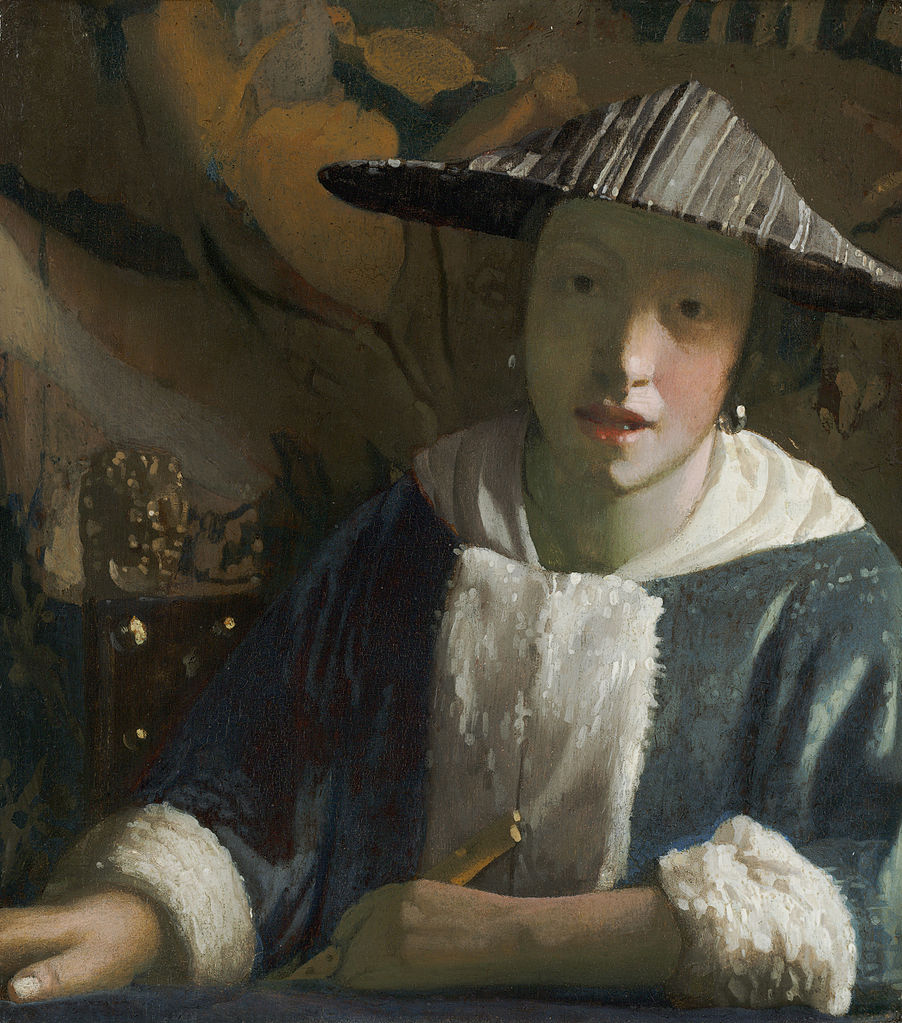
The Geographer, 1669, Städel Museum, Frankfurt am Main
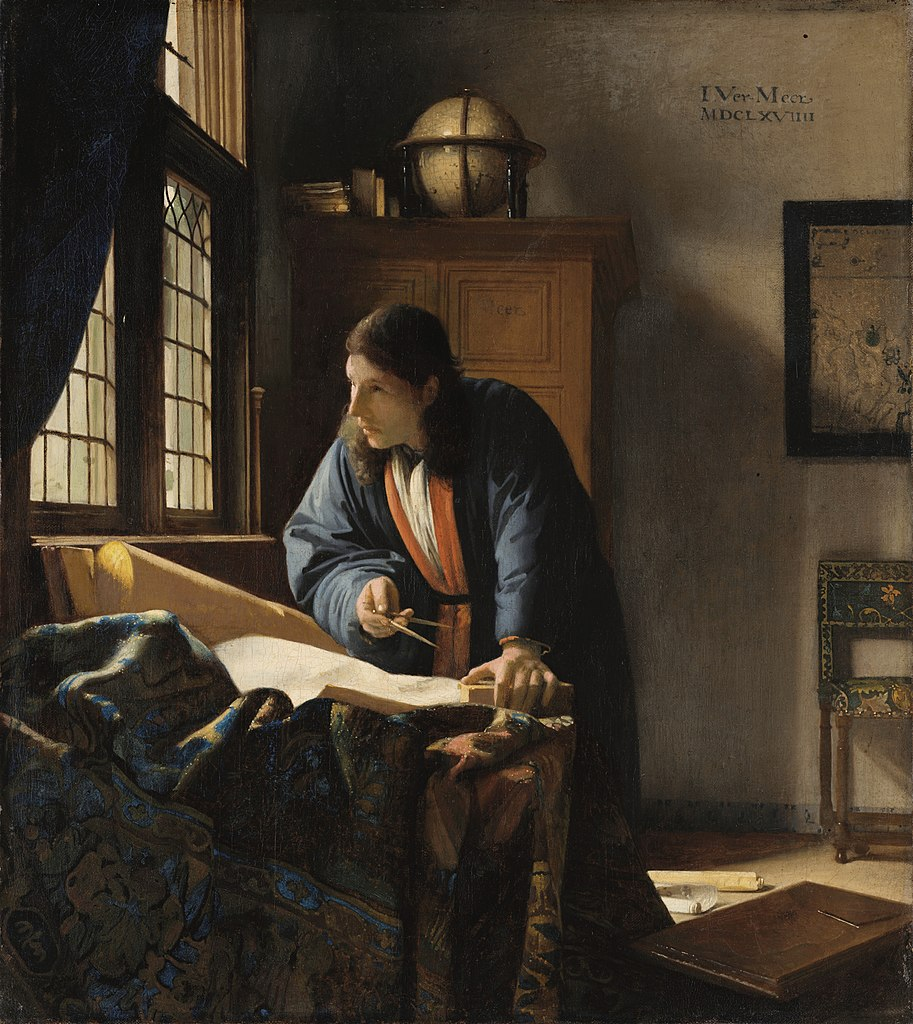
The Lacemaker, 1666–68, Musée du Louvre, Paris

The Love Letter, 1669-70, Rijksmuseum, Amsterdam

Woman Writing a Letter, with her Maid, 1670–72, National Gallery of Ireland, Dublin

Allegory of the Catholic Faith, 1670–74, The Metropolitan Museum of Art, New York

A Young Woman standing at a Virginal, 1670–72, The National Gallery, London

A Young Woman seated at a Virginal, c. 1670–72, The National Gallery, London

Young Woman Seated at a Virginal, c. 1670‐72, The Leiden Collection, New York
This work had also been the subject of much debate. In recent years, research has increasingly suggested that it is indeed a Vermeer original. The yellow cape, which was previously thought to have been added by later artists, is now considered to be an original part of the work, according to the latest research by the Rijksmuseum before this exhibition.

What works are absent from the exhibition?
In addition to the 28 works listed above, nine other works cannot be presented for various reasons.
A Maid Asleep, 1656-57, The Metropolitan Museum of Art, New York
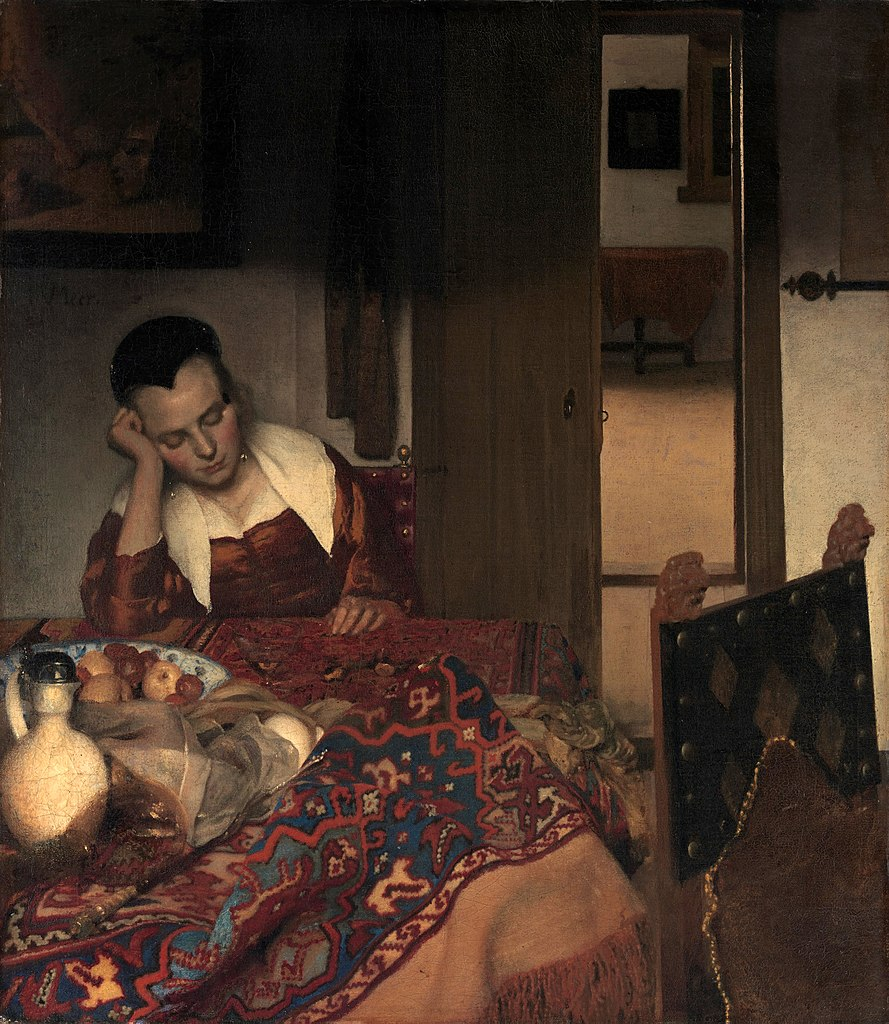
The Girl with the Wine Glass (A Lady and Two Gentlemen), 1659–60, Herzog Anton Ulrich Museum, Braunschweig

Young Woman with a Water Pitcher, 1660-62, Metropolitan Museum of Art, New York

The Music Lesson, 1662–65, The Royal Collection,The Windsor Castle
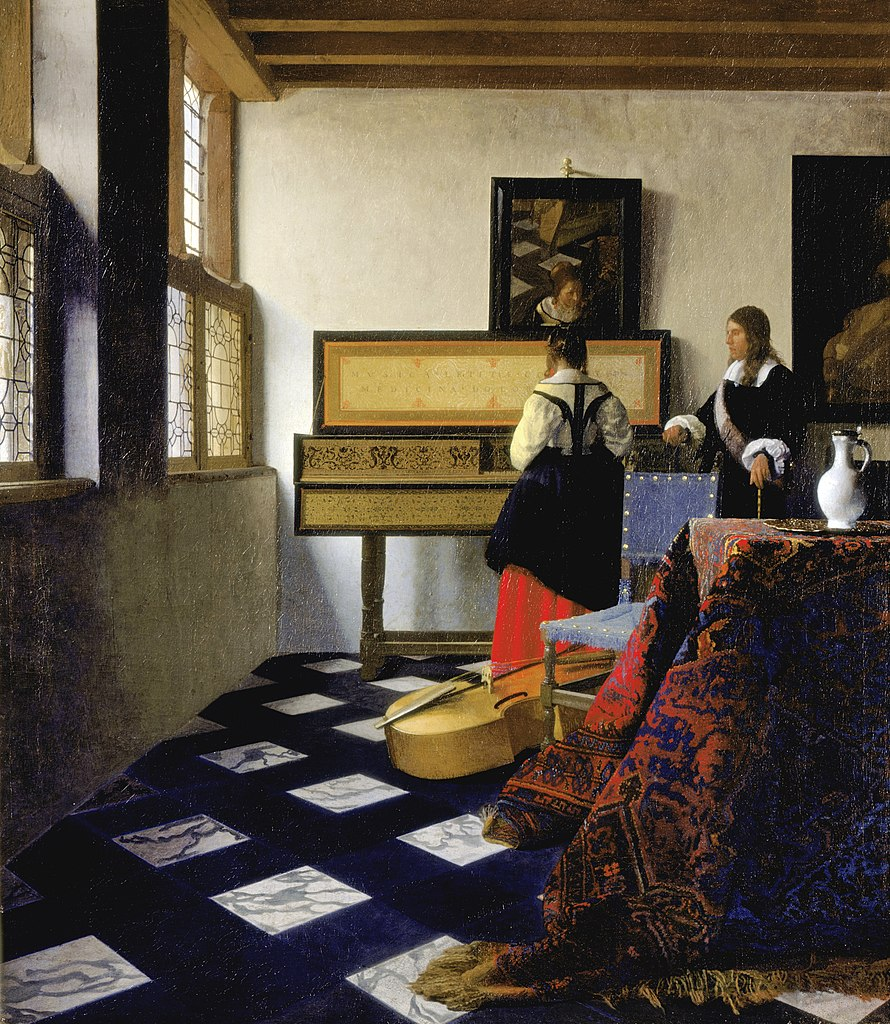
The Concert, 1663–66, Isabella Stewart Gardner Museum, Boston
This work was stolen in 1990 and its whereabouts remain unknown.

Study of a Young Woman, 1665-67 The Metropolitan Museum of Art, New York

Allegory of the Art of Painting , 1666-68, Kunsthistorisches Museum, Vienna

The Astronomer, 1668, Musée du Louvre, Paris

The Guitar Player, 1670-72, Kenwood House, London
This painting was stolen in 1974, and the thief made an unbelievable exchange offer: giving away £1 million worth of free food to the poor in the Caribbean in exchange for the painting. Later, they added another condition, demanding the release of the Price sisters who were arrested for plotting the bombing in London. A few months later, the painting was recovered by the police.

The Metropolitan Museum of Art only loaned two of its Vermeer works, keeping three of them for display in its own museum, which seems a bit stingy. The Louvre lent out "The Lacemaker" while keeping the more exciting " The Astronomer", making it impossible to display alongside the similar " The Geographer". As for the stolen "The Concert", it may never see the light of day again, which is a permanent regret for fans. However, "The Music Lesson" was exhibited at the Mauritshuis Museum in The Hague in 2017, and I was fortunate enough to see it.
If all goes well, I will have seen 33 Vermeer works by the end of this trip. However, the ongoing war between Russia and Ukraine has caused many flights to Europe to be cancelled, which is something I never thought would affect me personally. The stories of art are always inseparable from those of war. In World War II, Vermeer was also at the center of the whirlwind of art looting and protection. I hope that such stories will never be repeated. May there be peace in the world, and art will live on.